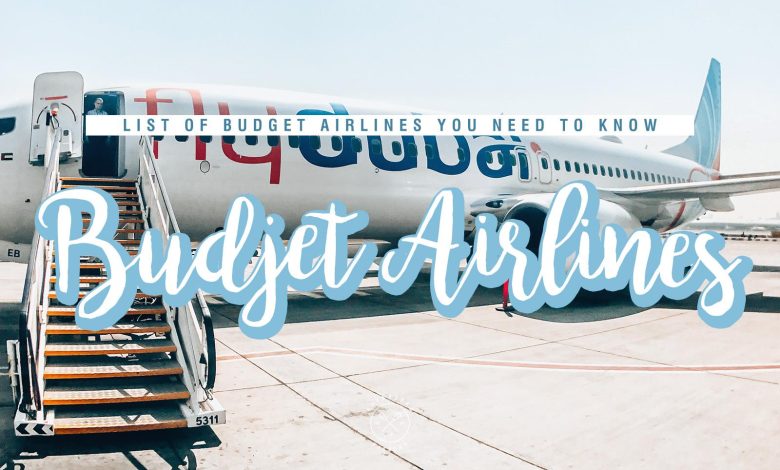
In recent years, budget airlines have significantly expanded their reach, offering travelers the opportunity to explore far-flung destinations at a fraction of the cost of traditional carriers. As these low-cost airlines continue to enter the long-haul market, a pressing question emerges: should you trust budget airlines for long-haul flights? This article aims to provide a comprehensive examination of the factors to consider when choosing a budget airline for extended travel. From safety records and service quality to hidden fees and comfort levels, we will delve into the critical aspects that can influence your travel experience. By the end, you’ll have a clearer understanding of whether a budget airline aligns with your travel needs and expectations for long-haul journeys.
Evaluating Safety Standards and Maintenance Practices
When considering the reliability of budget airlines for long-haul flights, one must delve into the intricacies of their safety standards and maintenance practices. Budget airlines often operate under stringent regulations set by aviation authorities, ensuring that their aircraft meet the necessary safety criteria. These regulations are designed to be universally applicable, meaning that whether it’s a budget or premium airline, the fundamental safety standards are consistent. However, it’s crucial to note that while the regulations are standardized, the implementation can vary.
Maintenance practices are a critical factor to consider. Here are some aspects to look for when evaluating a budget airline’s commitment to safety:
- Compliance with International Standards: Check if the airline adheres to globally recognized safety certifications.
- Fleet Age: Consider the average age of the airline’s fleet, as newer aircraft often incorporate advanced safety technologies.
- Frequency of Maintenance Checks: Investigate how regularly the airline conducts maintenance on their aircraft, as frequent checks can indicate a proactive approach to safety.
- Transparency: Look for airlines that openly share their safety records and maintenance schedules, showcasing their commitment to passenger safety.
By examining these factors, passengers can make informed decisions about the trustworthiness of budget airlines for their long-haul travel needs.

Comparing In-Flight Comfort and Amenities
When it comes to evaluating the comfort and amenities of budget airlines on long-haul flights, it’s crucial to weigh the cost savings against the in-flight experience. Seat comfort is often a primary concern; while budget carriers may offer competitive prices, their seating arrangements are typically less spacious, with reduced legroom and narrower seats. This can be particularly challenging on long journeys, where comfort plays a significant role in overall satisfaction.
Budget airlines often cut costs by offering fewer in-flight amenities. You might find limited or no complimentary meal services, with food and beverages available for purchase instead. Entertainment options can also be sparse; some budget airlines forego personal screens, relying instead on passengers’ personal devices for streaming content. However, some budget carriers have started to innovate by providing Wi-Fi and charging ports, albeit at an extra cost. It’s essential to review what each airline offers and decide whether the savings justify the potential trade-offs in comfort and convenience.

Analyzing Cost Efficiency and Hidden Fees
When considering budget airlines for long-haul flights, it’s crucial to examine both the apparent cost savings and potential hidden fees. While the initial ticket price may seem like a bargain, passengers often encounter additional charges that can quickly add up. These can include fees for:
- Checked baggage
- Seat selection
- In-flight meals and beverages
- Entertainment options
- Priority boarding
Understanding the full cost of your journey is essential to determine if budget airlines truly offer a more economical option. Often, the base fare excludes amenities that traditional carriers might include in their pricing, which can lead to a surprisingly comparable total cost. Therefore, a comprehensive evaluation of all potential expenses is necessary to make an informed decision.

Assessing Customer Service and Support
When considering budget airlines for long-haul flights, evaluating their customer service and support is crucial. Many budget carriers may cut costs in various areas, and customer service can sometimes be one of them. However, this doesn’t mean all budget airlines lack quality support. It’s important to research and read reviews to understand what to expect.
- Availability of Support: Check if the airline provides 24/7 customer service. Some budget airlines may only offer limited support hours, which can be inconvenient during emergencies.
- Channels of Communication: Ensure there are multiple ways to contact support, such as phone, email, or live chat. Some airlines might even offer support through social media platforms.
- Response Time: Quick response times are essential, especially when dealing with issues like flight changes or cancellations. Look for airlines that have a reputation for timely responses.
- Resolution Effectiveness: It’s not just about getting a response, but also about how effectively and efficiently your issues are resolved. Check customer feedback on how well the airline handles complaints and issues.
By thoroughly assessing these aspects, you can better determine if a budget airline’s customer service aligns with your expectations for a long-haul journey.



